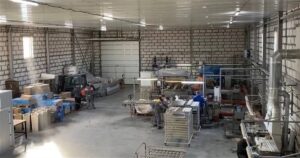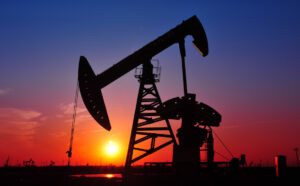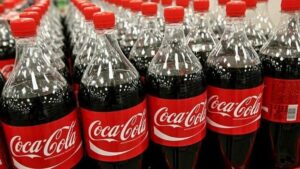
Ceramic Masses of Donbass LLC (Slavyansk, Donetsk Region) resumed production, the company’s press service said.
“It was a very difficult road to recovery: damaged equipment, a lot of destruction, destroyed electricity/gas lines, inability to access raw materials, but we managed,” the company’s official Facebook page reported.
It is specified that a limited line has been resumed for the time being, semipharmonic mass PFF-3 is already available, once the production processes are set up, the offer will be expanded.
According to opendatabot, LLC “Ceramic Mass of Donbass” was founded in 2007, the authorized capital – 45 million 579 thousand UAH. The founders are PrJSC Ukrainian Ceramic Group (24%) and Dutch World Ceramic Investments B.V. (76%).

In January-May 2023, the Carton and Paper Company (Lviv), a major Ukrainian manufacturer of carton sleeves and sanitary products, increased its output by 29.9% in comparison with the same period of 2022 – up to UAH 524.47 million.
According to statistics from association “UkrPapir” given to agency “Interfax-Ukraine”, in volume terms, the company increased the output of cardboard products by 8.8% – to 11.4 thousand tons, and paper-base for sanitary products has slightly decreased – to 2.8 thousand tons. Production of toilet paper in rolls increased by 28% to 2.3 million pieces.
The Company increased its paper and paperboard output by 2.6% to 3.1 thousand tons in May compared to the same month in 2022.
“Cardboard and Paper Company” (until 2011 – “Lvivkartonoplast”) produces products and semi-finished products of waste paper (cardboard sheets, corners, sleeves), pulp and recycled waste paper (toilet paper, towels, napkins TM Papero).
The products are exported to 23 countries.
As it was reported, in 2022 the factory, without stopping the work during the year, has increased the volume of marketable output by 51,5% compared to 2021 – up to 1 billion 186 million UAH. Net profit tripled to 263.7 mln hryvnia.

China increased oil production by 2.7 percent in May compared with the same month last year, to 18.1 million tons, according to the State Statistics Administration of the country.
Refining output soared 15.4 percent last month to 62 million tons, the second-highest total ever recorded. This was due, among other things, to the completion of scheduled maintenance work at a number of refineries.
Natural gas production in China in May increased by 7.2% and reached 19 billion cubic meters, since the beginning of this year – by 5.3% to 97.3 billion cubic meters.
Oil imports last month totaled 51.44 million tons, up 12.2 percent from the same month a year earlier, customs said. Gas imports rose 17.3% to 10.64 million tons, the highest since January 2022.
CHINA, GAS, OIL, PRODUCTION

Beer production in Ukraine in January-May of this year reached 51.1 million dal, 20.5% more than during the same period last year, according to the website of the brewers’ organization Ukrpivo.
It is specified that such growth is connected with the prohibition on manufacture and sale of beer, which was in force in 2022 (because of the full-scale invasion of Ukraine by Russia – IF-U) in January of this year the lag in manufacture of this drink was 15.2% compared to January-2022 indicators.
At the same time, this figure is only 77,5% of the volume of beer production in Ukraine in 2021, the industry association specified.
As it was reported beer production in Ukraine in 2022 decreased by 27,9% compared to 2021 – up to 122,8 million dal.
By the end of 2022 the brewing industry has partially recovered after the fall of production of this drink in the first quarter by 50% due to the Russian invasion and the shutdown of some breweries. Thus, at the end of the first four months of 2022 the decline was 42.8% compared to the same period of 2021, January-May – 36.4%, January-June – 32%, January-July and January-August – 31.6% each, January-September – 30.5%, January-October – 28.6%, January-November – 28.1%, the year before – 27.9%.

Coca-Cola Beverages Ukraine, the official bottler of Coca-Cola in Ukraine, is close to reaching its pre-war production and distribution volume in 2023, Coca-Cola HBS Director of Logistics Vladimir Choban said.
“In 2021 it was 120 million unit cases (all products, including imported products). In 2023, we expect 115 million unit cases (1 unit case equals 6 liters – IF) … We are so confidently moving towards this bar, realizing that it is the middle of the year …”, – said Choban at the logistics exhibition XXVIII Day of Logistics in Kiev on Friday.
According to him, the company resumed production at its plant in Bolshaya Dymerka in the Kiev region last May. However, due to problems with the ingredients, it produced only one fifth of the items in the assortment portfolio. Now it has already fully restored it, reaching 190 positions.
“I can say that we started producing 40 SKU (positions) in 2022. We were only putting on the shelf and distributing products that rotate quickly. As of today, we are producing almost 190 items… (full range – IF)”, – said Choban.
He noted that before the war, the company formed buffer stocks and dispersed them throughout the country, which allowed for a quick recovery in distribution. “That’s something we did ahead of time as a company, understanding the risks that there could be an escalation in 2022, and we did take almost everything we could take out to the regions and kept it there until a certain time. And that allowed us to resume distribution almost immediately after we de-occupied the region,” the director of logistics for Coca-Cola HBS pointed out.
The company continues to import carbon dioxide (CO2) used to make carbonated beverages from abroad, as its own combined heat and power (CHP) production is still in the process of recovery, the company said in a presentation.
“In May 2022, the lines at the plant were restarted, we started doing distribution, but there was nowhere to get CO2, we were importing CO2 from overseas. And now we continue to import. Now it is cheaper to bring it from abroad than to produce it in Ukraine,” said Choban.
According to him, the company employs 1.6 thousand people, and there have been no layoffs since 2022.
As reported, in connection with the Russian aggression against Ukraine, March 8, Coca-Cola announced the suspension of business in Russia, where it owns ten plants for the production of soft drinks and juices.
Coca-Cola Beverages Ukraine, Coca-Cola’s official bottler in Ukraine, produces a wide range of soft drinks in different categories – sweet fizzy drinks, juices, water, energy drinks and iced teas.
The company’s first factory in Ukraine was opened in Lviv. Now the company owns one plant in the village Bolshaya Dymerka, Kyiv region, which began operation in 1998 and was damaged by Russian occupation troops on March 10, 2022. Production at it was temporarily suspended.

Production of AdBlue, a special additive for diesel engines used to reduce NO (nitrogen oxide) emissions, was launched by Ostchem on the basis of Cherkassy Azot
“Today, Cherkassy Azot is capable of producing volume that provides 80% of the Ukrainian market and, if necessary, can ramp up production to cover all domestic consumption and for export to EU markets,” the company said in a press release on Friday.
It is specified that the market volume in Ukraine in 2022 was 23.4 thousand tons, and it decreased by more than 10 thousand tons due to military actions. Growth potential of Ukrainian market after introduction of standard Euro-4, Euro-5, Euro-6 exceeds 250 thousand tons, as the company believes.
Project on AdBlue production at Cherkassy “Azot” was announced in February 2022, in May 2022 the plant began to produce the first batches of product, and today the volume of urea solution production accounts for 30% of Ukrainian market needs.
“We are capable of becoming a major national player and gradually displacing imports. Our plans are to become a strong player in the EU markets, where demand for AdBlue is at a high level,” said Sergey Pavlyuchuk, head of Ostchem’s nitrogen business.
According to the release, the new production facility passed an international audit and this week received all required certificates confirming the quality of the product and allowing to use the AdBlue trademark and enter the EU markets, where, according to Ostchem, Ukrainian AdBlue has good prospects.
It is stated that at the first stage the company intends to fill the Ukrainian market by planning wholesale sales of AdBlue directly from the facility, as well as sales through retail chains, service stations and petrol stations and is already negotiating with a number of petrol stations to install their own AdBlue stations.
According to Ostchem, a large consumer of AdBlue will also be the agro-industrial complex, which uses modern machinery of the new generation.
A separate direction will be sales of the product in small containers of 10 and 20 liters.
The second stage will involve export to the neighbouring EU countries – Lithuania, Latvia, Romania, Hungary and Poland, as well as major AdBlue consumers – Germany (consumption level of 2.4 m t/year), France (2.1 m t/year), Italy (1.3 m t/year) and Turkey (726,000 t/year). According to Group DF estimates, the European market volume exceeds 7.2 million tons per year.
It is also stated that Cherkasy Azot will be the only Ukrainian producer of AdBlue by “direct method”, i.e. method of urea melt production, while the other producers use so called “blending” method, i.e. technology of mixing granulated urea with water. According to the company, its method ensures very high and stable quality at a low price, and in order to distinguish its AdBlue reagent on the Ukrainian and European markets, Ostchem has already registered its own trademark “Ukrblue”.
The use of the reagent is stipulated by EURO 6 standards and is aimed to reduce emissions of harmful substances. VDA (Verband der Automobilindustrie e.V., German Automotive Industry Association) owns the rights to the AdBlue trademark.
Group DF consolidates assets in the gas distribution, chemical, titanium and port industries, as well as in agriculture and media. The founder and owner of Group DF is Ukrainian businessman Dmitry Firtash.
Ostchem is the nitrogen holding of Group DF. It includes Rivneazot, Cherkasy Azot, as well as Severodonetsk Azot and Stirol (not operating and located in the occupied territories).
Cherkasy Azot PJSC has been a part of Group DF since 2011. The design production capacity of PJSC “Azot” is 962.7 thousand tons of ammonia per year, ammonium nitrate – 970 thousand tons per year, urea – 891.6 thousand tons, UAN – 1 million tons per year.